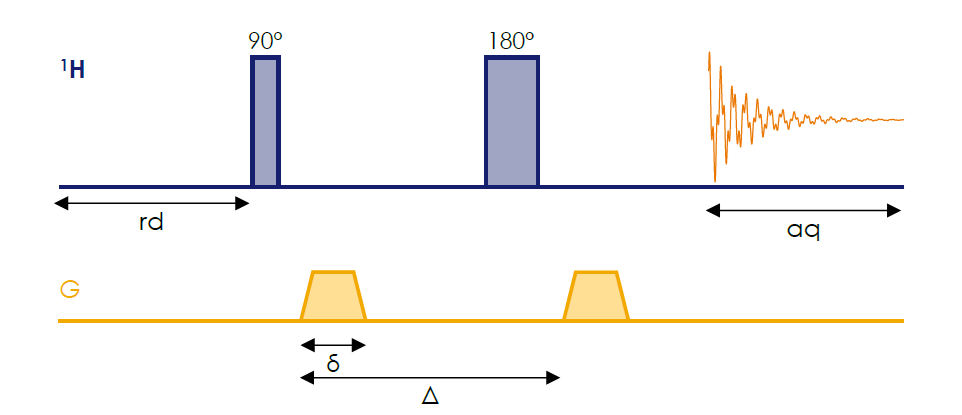Products
Applications
Learning
In this Interview, Dr. Dave Ellis (Heriot-Watt University) discusses the advantages of benchtop NMR over high-field and applications of the X-Pulse.
I am Dr. Dave Ellis, a member of the chemistry department at Heriot-Watt University. My primary work areas involve teaching chemistry, managing the NMR facility, and establishing an MSc program in Analytical Science for the Biosciences Industries, which extensively utilizes NMR. My research interests revolve around NMR and the broader field of analytical science.
Within our facility, NMR is predominantly employed for structure determination. When conducting synthetic chemistry and developing new compounds, it is crucial to identify their composition, and NMR proves to be the most powerful tool for this purpose.
I specialize in analyzing complex mixtures. Our ongoing project focuses on utilizing nuclear magnetic resonance (NMR) to examine potential alternatives to peat in the production of Scotch whiskey. As peat is a threatened resource, we aim to explore alternative sources that can provide the same smoky flavors in Scotch whiskey.

Benchtop and High Field NMR instruments are utilized in our facility. High Field NMR is advantageous when studying complex mixtures and aiming to understand their detailed composition comprehensively. However, if the objective is to identify specific key markers, benchtop NMR can be a suitable choice.
The benefits of benchtop NMR have been well-established. The instrument is more compact and portable; ours sits on a trolley, allowing easy mobility. We frequently employ benchtop NMR, and I would like to emphasize its application in teaching.
In our MSc program in analytical science, NMR plays a significant role, including incorporating benchtop NMR.
We had the privilege of hosting Robin Blagg from Oxford Instruments, who visited us recently to enlighten our Master's students about the various applications of benchtop NMR. We had hands-on experience with the spectrometer during the visit, allowing the students to explore and run samples.
This relatively compact instrument is an excellent training tool, allowing students to gather around it and engage in specific optimization processes, such as magnet tuning and sample shimming, before conducting experiments.
It serves as an effective means of educating individuals on the inner workings of NMR, providing a comprehensive understanding of the subject.
I am fond of pulse-field gradients, and we have extensively utilized diffusion NMR at Heriot-Watt University for various applications, making gradients indispensable.
I was thrilled to discover that the new SpinFlow release for the X-Pulse includes one-dimensional diffusion-ordered spectroscopy (DOSY) sequences. This development represents a significant step forward.

The X-Pulse system is user-friendly, with easy-to-understand hardware and intuitive software. Training users interested in benchtop NMR can generally be accomplished in just five minutes. Students possess excellent proficiency in navigating straightforward software, making the SpinFlow interface highly accessible.
We have established the Continuum Lab at Heriot-Watt University, which focuses on flow chemistry and reaction monitoring.
It is widely acknowledged that traditional batch synthesis methods involving round-bottomed flasks, column separations, and crystallization need to be updated in chemistry. The current trend is shifting toward the preparation of substances using flow techniques.
A significant advancement in recent years has been the ability to continuously monitor chemical reactions or degradation processes in a flow setup. This continuous monitoring is made possible primarily through the utilization of benchtop NMR.
I want to highlight two projects involving fluorine NMR, as it synergizes exceptionally well with benchtop systems. The first project revolves around the tagging of biomolecules using fluorine-19. We aim to introduce fluorinating agents to human blood, tagging specific molecules within the blood matrix with fluorine. By employing fluorine NMR, we can obtain much simpler spectra than proton spectra. This approach holds potential for medical diagnostics and screening purposes. The second project focuses on the degradation of per- and polyfluorinated alkyl substances (PFAS), which are recognized as significant threats to human health and ecological balance. While previous studies have explored the degradation of PFAS using chemical reagents in benchtop setups, we propose a novel approach involving microbial activity. This concept entails bioremediation, potentially in soil, and monitoring PFAS degradation using fluorine NMR on a benchtop instrument.

Dr. Dave Ellis works in the chemistry department at Heriot-Watt University. He teaches chemistry and manages the NMR facility. Recently, he set up an MSc in Analytical Science for the Biosciences Industries. His research interests lie in NMR and, more broadly, analytical science.